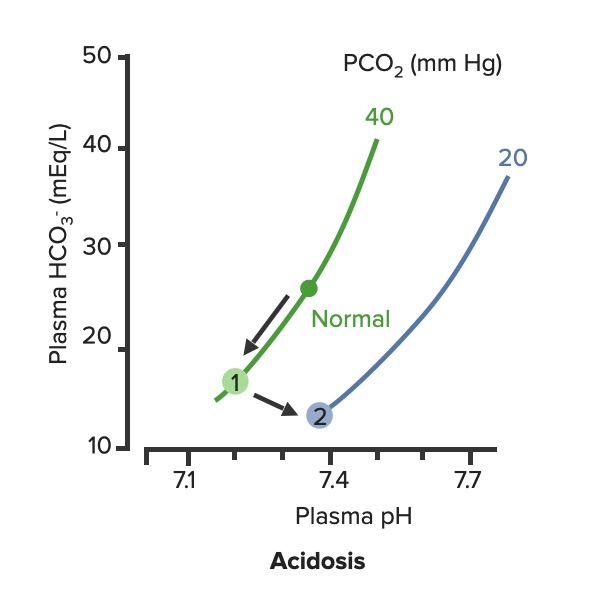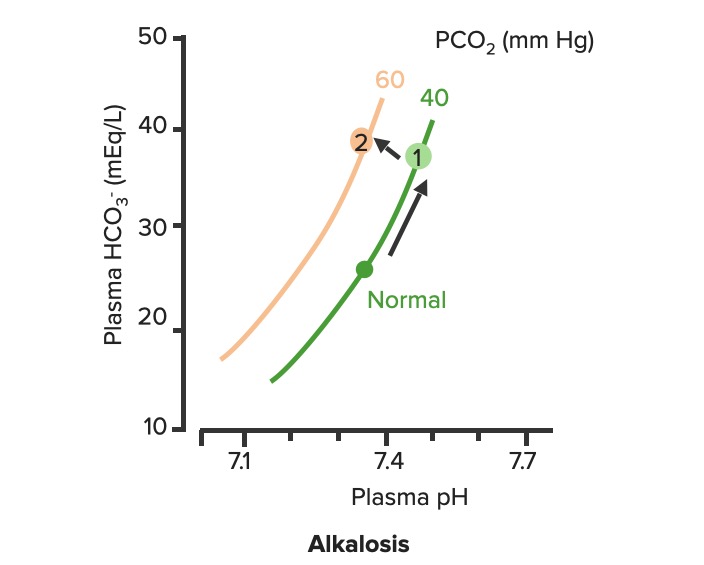Playlist
Show Playlist
Hide Playlist
Approach to Acid Base Status: Step 3a – Laboratory Diagnostics
-
Slides DiagnosticsAcidosisAlkidosisStep3-5 RespiratoryPathology.pdf
-
Download Lecture Overview
00:00 Okay, now, Stepwise Approach, let's put everything together. 00:04 Metabolic processes. 00:05 If you find that, well, the degree of compensation was higher than expected then what does this mean to you? There's a concomitant respiratory acidosis. 00:15 So, next step here, that if you find that the compensation was higher, what does that mean? Well, if it was metabolic alkalosis, the bicarb was already increased. Maybe it moved up to 40. 00:30 Well, you figured out the formula, figure out the degree of compensation, you should know the carbon dioxide should also increase and say that the – it was supposed to move up into 60, but oh, my, god, the degree of compensation went up to 80. 00:47 So if the PCO2 was higher than expected, please note that there is a concomitant respiratory acidosis. 00:54 What about the other one? What about if the PCO2 is lower than expected? If your PCO2, the degree of compensation was lower than expected, then this was a concomitant respiratory alkalosis. 01:05 I'm giving you example such as metabolic acidosis. 01:09 On the other side, respiratory processes, if the pH is higher than expected then here you can expect a concomitant metabolic alkalosis. 01:19 If the pH is lower than expected then it’s concomitant metabolic acidosis. 01:25 Remember, with compensation – respiratory acute and chronic, and at some point in time, if the pH is higher than expected you can expect it to be concomitant issues.
About the Lecture
The lecture Approach to Acid Base Status: Step 3a – Laboratory Diagnostics by Carlo Raj, MD is from the course Pulmonary Diagnostics.
Included Quiz Questions
Which of the following is the correct diagnosis based on the following values? pH = 7.13 PCO2 = 60 HCO3 = 10
- Respiratory acidosis with concomitant metabolic acidosis.
- Respiratory acidosis with concomitant metabolic alkalosis.
- Respiratory alkalosis with concomitant metabolic acidosis.
- Metabolic acidosis
- Respiratory acidosis
Customer reviews
5,0 of 5 stars
| 5 Stars |
|
5 |
| 4 Stars |
|
0 |
| 3 Stars |
|
0 |
| 2 Stars |
|
0 |
| 1 Star |
|
0 |








